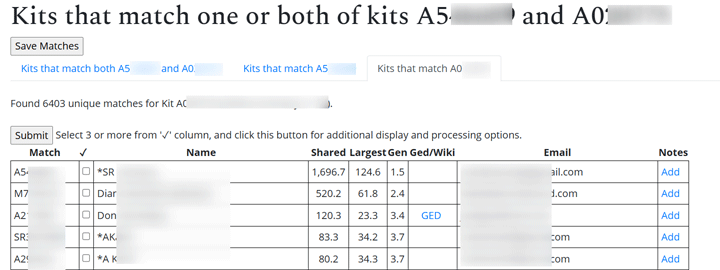23andMe is now owned by Anne Wojcicki’s new non-profit The 23andMe Research Institute. An email has gone out to all of us users (see next page) explaining this, which also makes it clear that the focus will be on discovering the health issues in our DNA. Click here for my previous post on 23andme explaining why Anne has this interest.
While crowd sourcing DNA health issues is certainly a worthy cause, it is not the main interest for many of us. Most of my readers consider genetic genealogy a tool to find relatives and uncover family stories.
The feature I miss the most at 23andme is the chromosome browser that showed where my genome matched that of my relatives. Because I have collected an excel file of all my father’s matches with notations as to which I or my brother share, I could frequently tell which family line a new match belonged to, even a one segment match with no clear relatives in common. Click here for the blog post where I discuss this.
I no longer recommend testing at 23andme unless you want health results or are an adoptee and thus need to test everywhere.
The next page has the text of the email they have sent all of us users.



